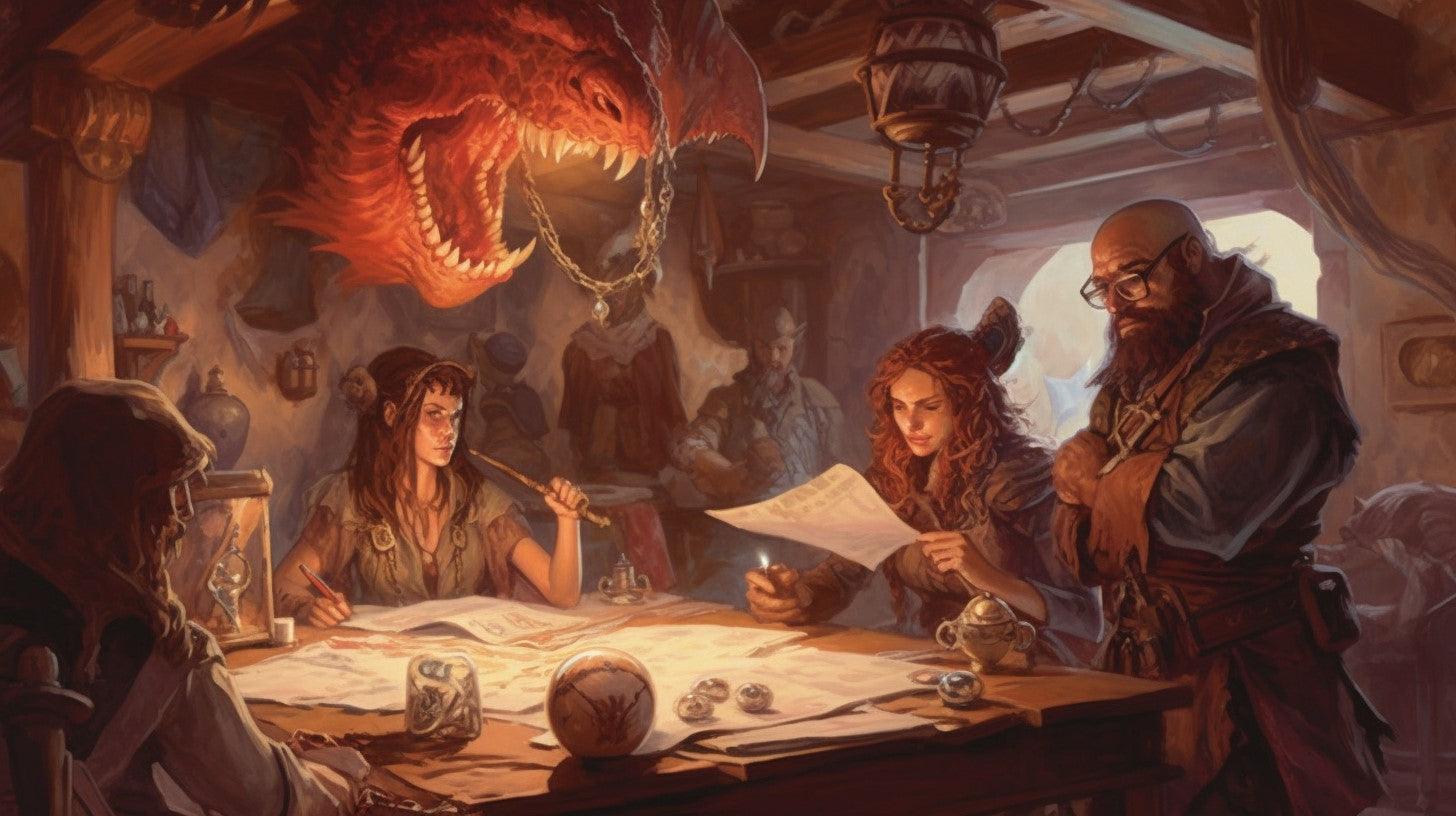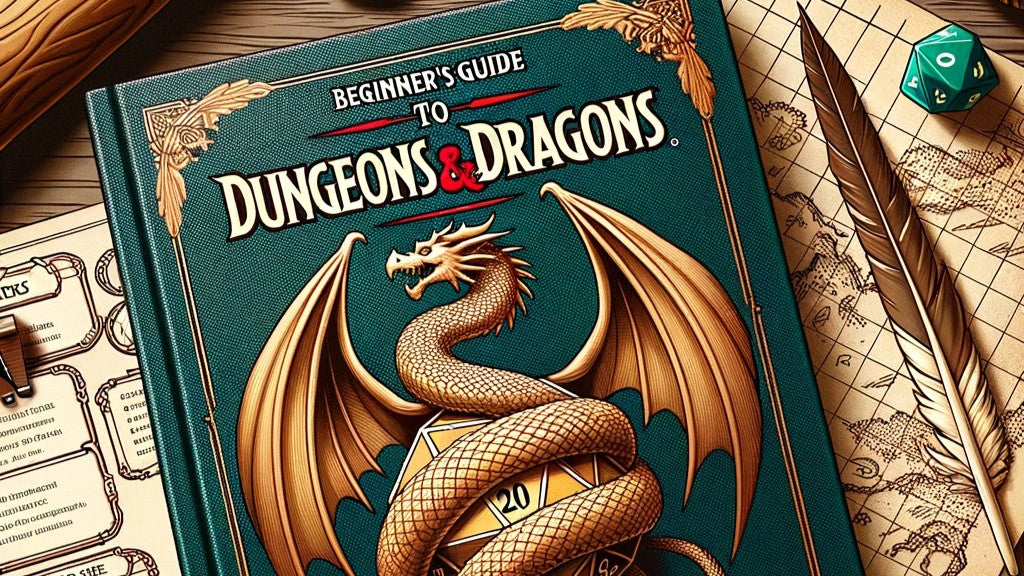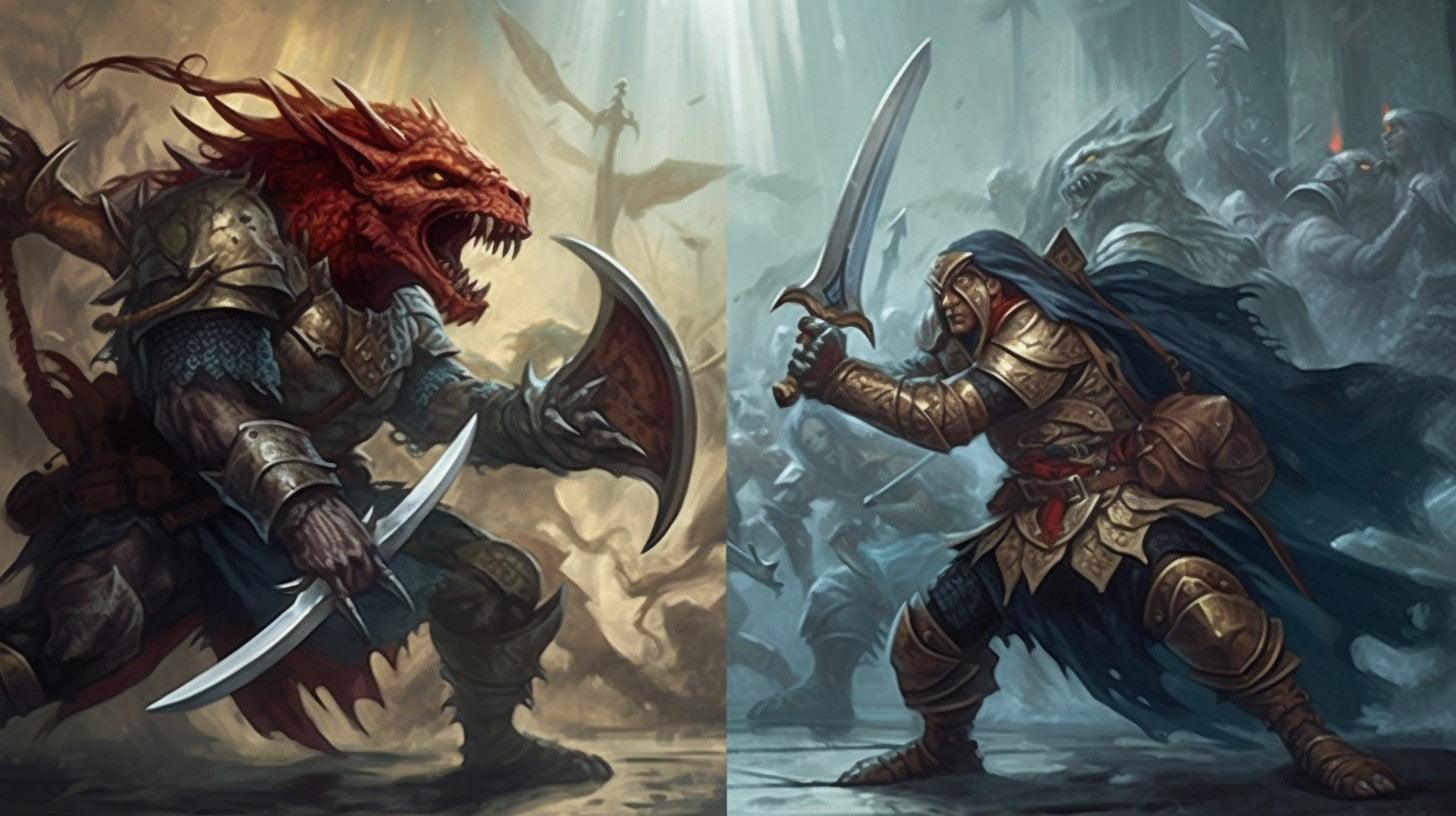Introduction:
Dungeons & Dragons (D&D) is a tabletop role-playing game that has captivated players for decades with its rich storytelling, immersive settings, and endless opportunities for adventure. Whether you're a complete beginner or a seasoned veteran, understanding how D&D works is crucial to getting the most out of your gaming experience. In this ultimate guide, we'll cover the basics of gameplay, including character creation, game mechanics, and the roles of players and Dungeon Masters.
What is Dungeons & Dragons?
Dungeons & Dragons is a cooperative storytelling game in which players create characters and embark on adventures in a fantasy world. The game is guided by a Dungeon Master (DM) who controls the world, its inhabitants, and the overarching story, while the players navigate challenges, engage in combat, and make choices that shape the narrative.

The Core Rulebooks:
D&D is primarily played using three core rulebooks: the Player's Handbook (PHB), the Dungeon Master's Guide (DMG), and the Monster Manual (MM). The PHB contains rules for character creation, game mechanics, and spells, while the DMG offers guidance on world-building, storytelling, and running the game. The MM provides a compendium of creatures and monsters that the DM can use to populate the world.
Character Creation
One of the most exciting aspects of D&D is creating your character. Your character serves as your avatar in the game world, and their abilities, backstory, and personality shape your experience at the table. Character creation involves several key steps, including choosing a race, class, background, and ability scores.
Choosing a Race:
Your character's race determines their physical characteristics, abilities, and cultural background. D&D offers a wide range of playable races, from the familiar (e.g., humans, elves, and dwarves) to the more exotic (e.g., tieflings, dragonborn, and tabaxi). Each race has unique traits and abilities that can impact your character's role in the game.
Selecting a Class:
Your character's class represents their profession, skills, and abilities. There are 13 core classes in D&D 5th Edition, ranging from the combat-focused (e.g., fighter, barbarian) to the magic-oriented (e.g., wizard, sorcerer) to the skill-based (e.g., rogue, bard). Your choice of class will heavily influence your character's gameplay and role within the party.
Determining Ability Scores:
Ability scores represent your character's core attributes: Strength, Dexterity, Constitution, Intelligence, Wisdom, and Charisma. These scores affect everything from combat prowess to skill checks to spellcasting abilities. Players typically determine their ability scores using one of three methods: point buy, standard array, or rolling dice.
Choosing a Background:
Your character's background represents their personal history, skills, and experiences before the start of the game. Backgrounds provide additional skill proficiencies, equipment, and roleplaying elements, such as personality traits, ideals, bonds, and flaws. By selecting a background that aligns with your character's story, you can create a more well-rounded and engaging persona.
Game Mechanics
Understanding the core game mechanics is essential to fully enjoy your D&D experience. This section will introduce you to the most important mechanics, including dice rolls, combat, and spellcasting.
Dice Rolls and Ability Checks:
D&D is played using various polyhedral dice, with the most important being the 20-sided die (d20). Players roll the d20 for ability checks, attack rolls, and saving throws, adding relevant modifiers to the result. A high roll generally indicates success, while a low roll may lead to failure.
Combat:
Combat is a core element of D&D, pitting players against monsters and adversaries in turn-based encounters. Players and enemies take turns making attacks, casting spells, and performing other actions. Combat is divided into rounds, with each participant acting in initiative order based on a rolled dexterity check.
Spellcasting:
Many D&D classes have access to magical spells, which can be used for offense, defense, or utility purposes. Spells are divided into nine levels, with higher-level spells generally being more powerful. Spellcasters must manage their limited spell slots, carefully choosing which spells to prepare and cast each day.
The Role of the Dungeon Master
The Dungeon Master (DM) plays a crucial role in the D&D experience. As the architect of the game world, the DM sets the stage, controls the story's pace, and responds to players' actions. A good DM balances challenge and fun, creating an engaging and memorable adventure for all participants.
World-Building and Storytelling:
The DM is responsible for creating the game world, including its geography, history, cultures, and inhabitants. They craft the narrative, weaving together the players' actions and the world's events to create a compelling and dynamic story.
Running Encounters and Challenges:
The DM designs and manages encounters, which can range from combat with monsters to social interactions with NPCs to exploration of mysterious locations. They determine the difficulty of challenges, rewarding players with experience points, treasure, and story progression based on their successes and failures.
Adjudicating Rules and Player Actions:
As the final arbiter of the game's rules, the DM interprets and applies the mechanics to ensure a smooth and enjoyable experience. They must also be flexible and creative, adapting to players' actions and improvising when necessary to keep the story engaging and fun.
Getting Started and Finding a Group
Now that you have a basic understanding of how Dungeons & Dragons works, you may be eager to start your own adventure. This final section will provide you with some tips on how to get started and find a group to play with.
Acquiring the Necessary Materials:
To begin playing D&D, you'll need a few essential materials, including the Player's Handbook, a set of polyhedral dice, a character sheet, and a pencil. Optionally, you may also want to acquire the Dungeon Master's Guide and Monster Manual if you plan to run your own games.
Finding a Group:
There are several ways to find a group of like-minded players to join you on your D&D adventure. Local game stores often host D&D sessions, or you can use online platforms like Meetup or social media groups to connect with players in your area. Additionally, online platforms like Roll20 and Discord make it possible to play D&D virtually with people from around the world.
Learning from Others:
One of the best ways to become more comfortable with the rules and mechanics of D&D is to learn from more experienced players. Joining an existing group or watching actual play sessions on platforms like YouTube and Twitch can provide valuable insights into how the game is played and help you become a more confident player.
Don't Be Afraid to Ask Questions:
As a new player, it's natural to have questions about the rules, mechanics, and roleplaying aspects of D&D. Don't be afraid to ask your fellow players or your Dungeon Master for clarification or advice. The D&D community is generally welcoming and supportive, and most players are more than happy to help newcomers learn the ropes.
Conclusion:
Embarking on your first Dungeons & Dragons adventure can be an exciting and rewarding experience. By understanding the basics of the game, acquiring the necessary materials, and connecting with fellow players, you'll be well on your way to exploring fantastical worlds, forging unforgettable friendships, and creating epic tales of heroism and adventure. So gather your dice, prepare your character sheet, and get ready to embark on the adventure of a lifetime!



